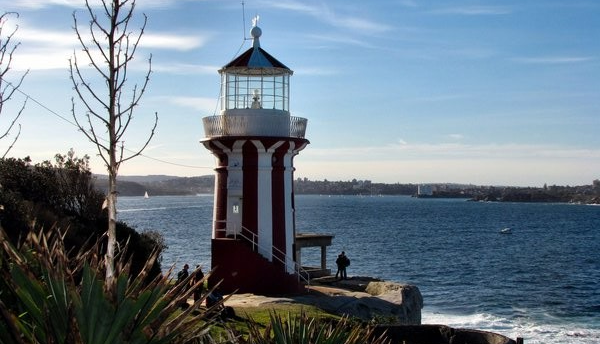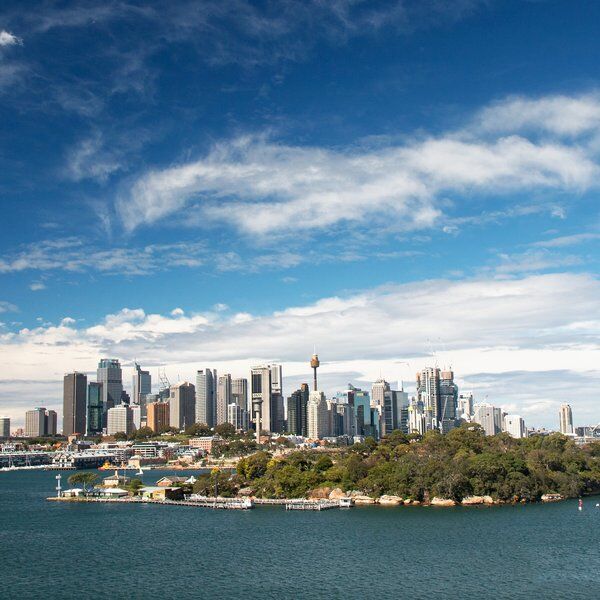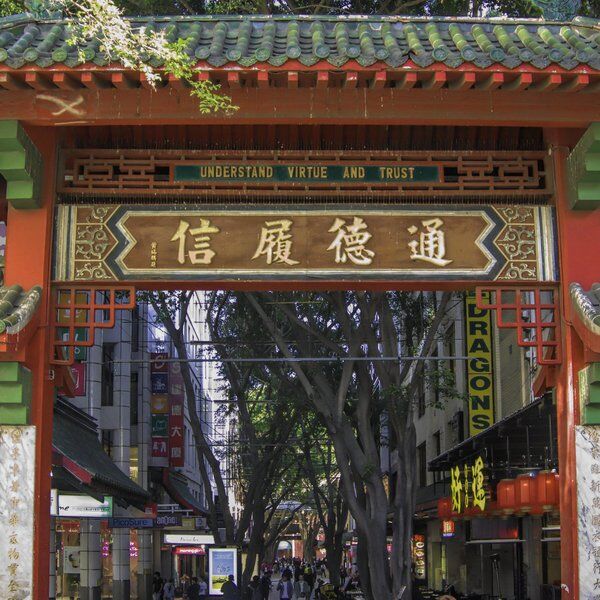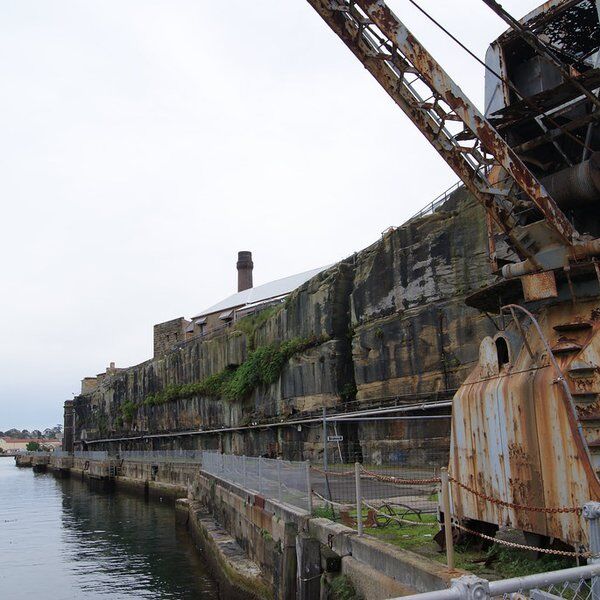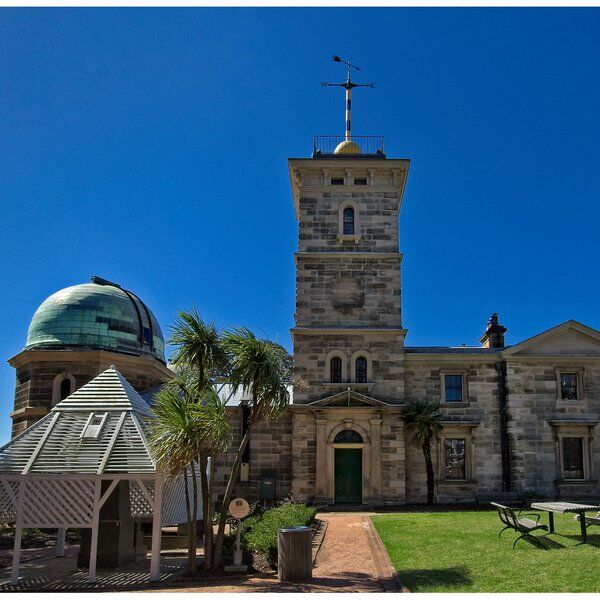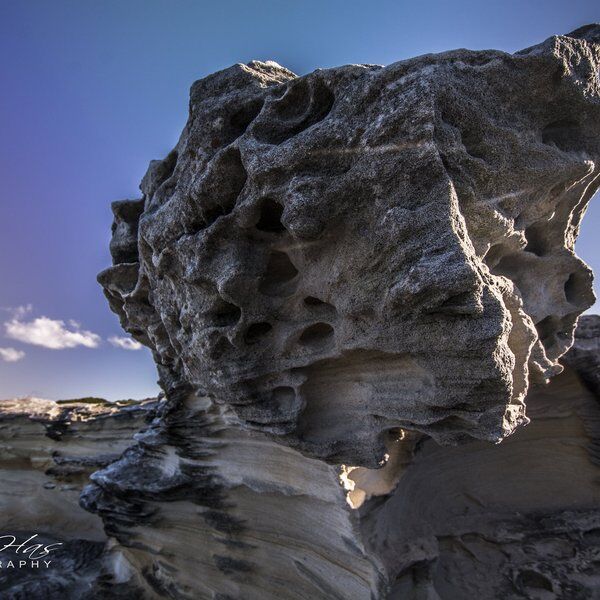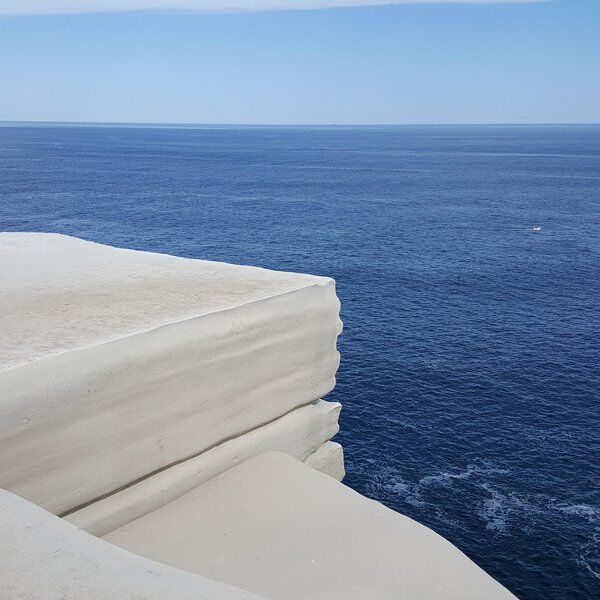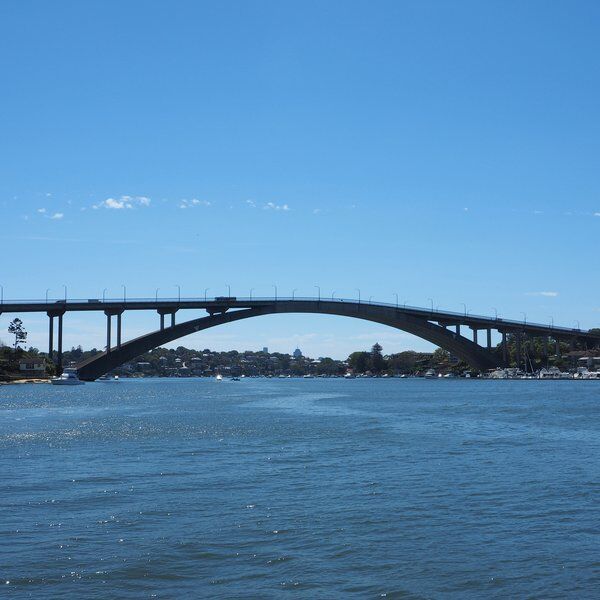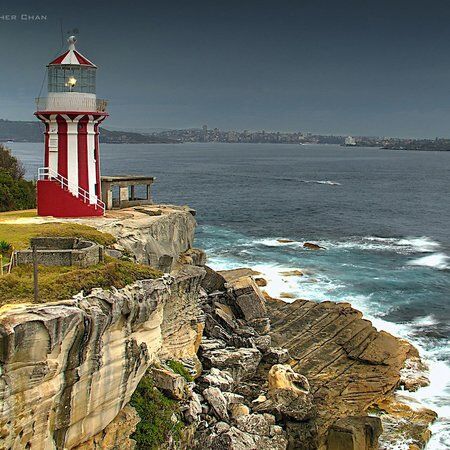
Discover Hornby Lighthouse in Sydney
Hornby Lighthouse, also known as South Head Lower Light or South Head Signal Station, is an active lighthouse at the tip of South Head in New South Wales, Australia. Marking the southern entrance to Port Jackson, Hornby Lighthouse is the third oldest lighthouse in New South Wales. Designed by the Colonial Architect, Mortimer Lewis, Hornby Lighthouse has been a significant navigational aid since its creation in the 1840s.
The lighthouse’s importance as a "dominant Sydney landmark", continuously guiding ships into Port Jackson, is highlighted by its inclusion on the New South Wales State Heritage Register since 2nd April 1999. In a vision of red and white vertical stripes with its visible lantern, Hornby Lighthouse is arguably the most attractive in Sydney’s repertoire.
Although the tower itself is closed to the public, visitors can view the site via the South Head Heritage Trail, starting from the Watsons Bay ferry terminal. The easy walk from Camp Cove to the lighthouse is dotted with interesting features, including gun emplacements and the nudist Lady Bay Beach. The trail also promises views of Sydney Harbour to the west, Middle Head and North Head to the north, and the vast Pacific Ocean to the east.
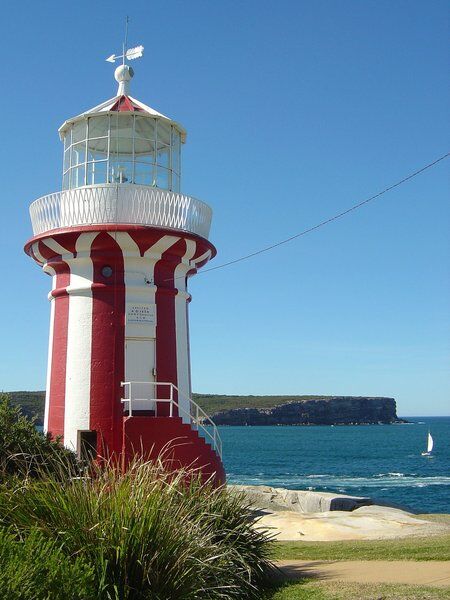
Early Signal Stations
The area surrounding the current Hornby Lighthouse has been a significant landmark for maritime communication since 1790, when the first signal station was established. But the necessity for a lighthouse at the entrance of Jackson Bay became tragically apparent following the loss of two ships in 1857.
The first was the "Dunbar", which wrecked in August, resulting in the loss of 121 lives. In October, two months later, the "Catherine Adamson" met a similar fate, claiming 21 lives. These incidents spurred public demand for clearer signalling of the entrance to the bay.

Hornby Lighthouse: Construction and Design
The Hornby Lighthouse
In response to the shipwrecks, a committee from the Light, Pilot, and Navigation Board recommended the construction of a lighthouse. The design by Mortimer Lewis included a 9.1-metre sandstone tower with a watch keepers' quarters. The tower, completed in 1858, had a circular design, a cantilevered catwalk, and Colonial Georgian details.
Hornby Lighthouse was the third lighthouse built in New South Wales. It was inaugurated by Sir William Denison, the Governor of New South Wales, and named after his wife's family, the Hornbys. Initially it became known as the "Lower Light" to differentiate it from the Macquarie Lighthouse, "Upper Light".
The Lighthouse Keeper's Cottages
Adjacent to the lighthouse, two Georgian-style sandstone cottages were built for the lighthouse keepers. These cottages, designed by Colonial Architect Alexander Dawson, had timber verandahs and picket fences. Initially roofed with slate, the roofs were later replaced with corrugated asbestos cement. Each cottage had a small garden and an underground water tank, making the keepers self-sufficient. However, following the lighthouse’s automation in 1933, the lighthouse and its associated cottages fell into disuse.
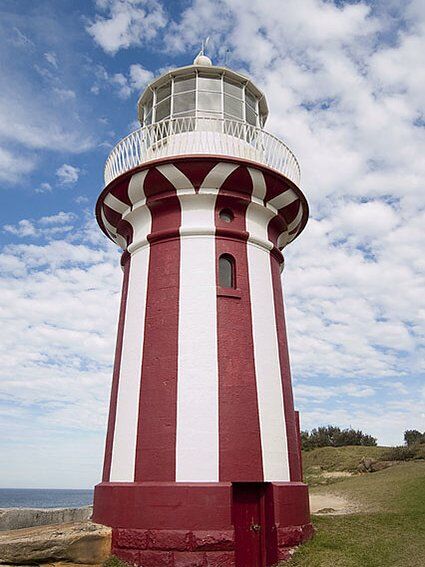
Technological Upgrades to Hornby Lighthouse
The initial light source was a kerosene lamp with a first-order catoptric lens but over the years it received several technological upgrades. In 1904, the light source was changed to incandescent gas, improving safety and brightness; in 1933, it was electrified and automated, reducing the need for manual operation; and in 1948, a new Chance Brothers catadioptric lens was installed, giving the light a rhythmic pattern. Today, the light is operated by the Sydney Ports Corporation, while the site is managed by the NSW National Parks & Wildlife Service.
Military Use of Hornby Lighthouse
The military had been using the Headland since the construction of the Second Battery in 1870. During World War II, the Hornby Lighthouse area was controlled by the Army, with the Lighthouse Keeper's Cottages housing military personnel. After the war, the cottages fell into further disrepair but were later restored by the NSW National Parks & Wildlife Service in 1977, after the National Trust classified the station in 1975.
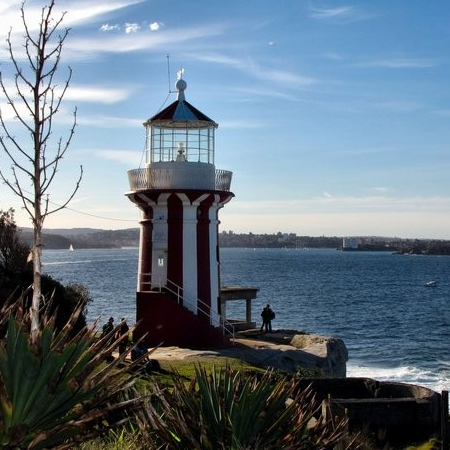
Aboriginal Connection to Hornby Lighthouse Area
Before British colonisation, the area around Sydney Harbour was inhabited by the Eora and Daruk Aboriginal Nations. This is why there are many Aboriginal landmarks in the region, including rock engravings and middens. However, the arrival of settlers led to the displacement of these communities and the destruction of much of their heritage.
Today, the park in which the lighthouse is situated offers guided tours with local Indigenous groups, such as Tribal Warrior. These tours shed light on the Aboriginal heritage of Sydney Harbour, often including visits to historical sites and stories about the original people of the land.

Exploring the Hornby Lighthouse Walk
One of the best things to do near Hornby Lighthouse is the Hornby Lighthouse Walk, a coastal trail that passes Watsons Bay and South Head.
Watsons Bay and Robertson Park (0 km - 0.24 km)
Begin your walk at Watsons Bay Wharf, near the harbour. This footpath is a relatively easy stroll, passing by the Doyles Restaurant and fish and chip shop. On the way Robertson Park is a spacious green area with natural shade, a rotunda, children's play equipment, and picnic facilities.
Camp Cove Beach (0.2 km - 0.58 km)
Discover Camp Cove, a sandy beach tucked away in a sheltered cove on the South Head. Here you can throw down beach towels and relax, or go swimming. The coastal walk from the intersection of Cove and Short Streets towards Camp Cove Beach, covers a distance of approximately 350 metres.
Exploring the Cannon (0.58 km - 0.71 km)
From Camp Cove Beach, you will pass by an old cannon and gun emplacement from the area’s time under military control. Cover a distance of 130 metres as you explore these structures, which once safeguarded a military jetty and boat shed. Wander along the cobblestone road, dating back to the late 19th century, which connected Camp Cove to various military installations on South Head.
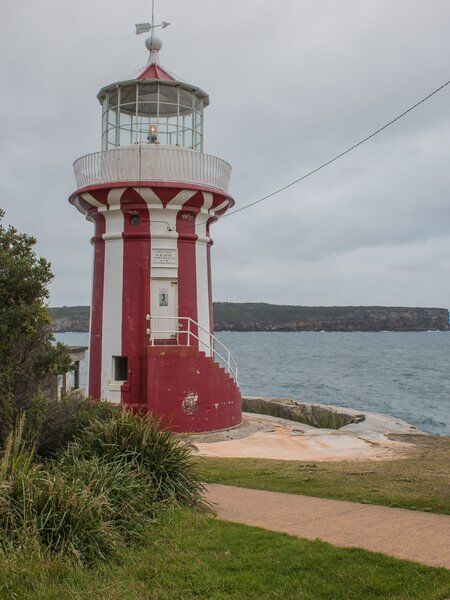
Lady Bay Beach (0.71 km - 1 km)
Continue your journey towards Lady Bay Beach, an official nudist beach since 1976, located between South Head's cliffs. Cover a distance of approximately 290 metres as you admire breathtaking views across the water to Middle Head.
Lady Bay Lookout (1 km - 1.09 km)
Heading up to Lady Bay Lookout, you can check out views of Sydney Harbour and the city skyline. Cover a distance of 90 metres as you navigate the main path and steps.
Exploring the Lightkeepers Cottage and Hornby Lighthouse (1.09 km - 1.32 km)
Enroute to the Hornby Lighthouse, don’t miss the historic Lightkeepers Cottage. Cover a distance of 230 metres as you learn about the harrowing tales of James Johnston, the first head lighthouse keeper. Finally, you’ve reached the Hornby Lighthouse. Admire its funky red and white stripes and learn about its role in maritime safety.
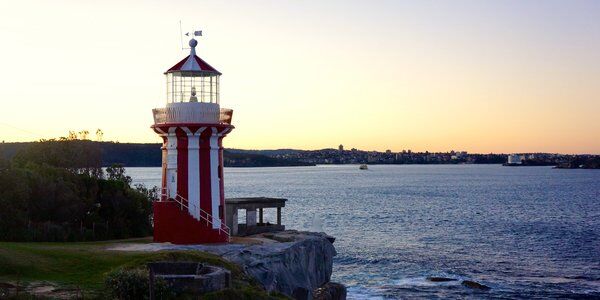
Things to do near Hornby Lighthouse
Sydney Harbour National Park
Hornby Lighthouse is located within the Sydney Harbour National Park, a protected area filled with sandstone cliffs, rocky foreshores, quiet beaches, and bushland. The park is home to five historic harbour islands: explore the convict and maritime heritage of Me-Mel (Goat Island), enjoy picnics at Rodd or Shark Island, or take in panoramic views from Clark Island. These islands were dedicated for public enjoyment since 1879, and are also perfect for outdoor activities like fishing, swimming, and hiking.
Whale Watching at Arabanoo Lookout
For sealife lovers, Arabanoo Lookout at Dobroyd Head is a prime spot for whale watching. Named in honour of the first Aboriginal man to live among European settlers, Arabanoo Lookout provides stunning scenes over North and South Head, as you watch humpback whales make their migratory journey.
Bradleys Head – Booraghee Amphitheatre
Another must-visit within the park is Bradleys Head – Booraghee Amphitheatre. This popular picnic area and fishing spot is also a great viewpoint over Sydney Harbour, while the amphitheatre is a great place to relax and enjoy the natural beauty of the area.

Walking Trails
The park boasts several walking trails that cater to all fitness levels. The Bradleys Head to Chowder Bay walk is a scenic route that takes you from Taronga Zoo to the beach and cafes at Chowder Bay. For an easier trail, the Fairfax Walk at North Head is paved and ideal for families with children.
Water Activities
For those seeking adventure on the water, guided kayak tours at Manly Beach provide an unforgettable paddling experience along Sydney's beautiful North Harbour. With the option to rent kayaks, visitors can explore hidden coves and secluded beaches.
Wildlife
Sydney Harbour National Park is home to over 150 bird species, visitors might spot a white-bellied sea eagle or a New Holland honeyeater. Near Manly, you could even catch a glimpse of the endangered little penguin, the state’s only known mainland colony. The park's flora is equally impressive, with native species such as the iconic grass tree, the delicate flannel flower, and the majestic smooth-barked apple tree.
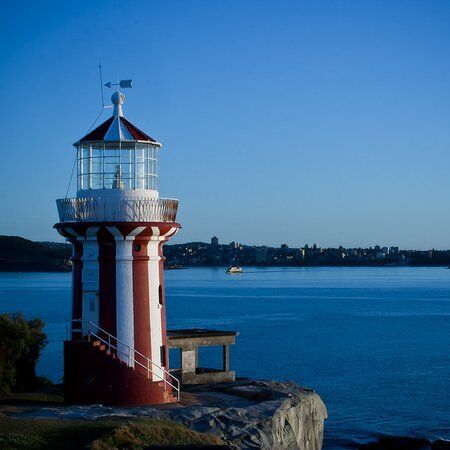
Interested in finding more places like this? Why not try one of our Scavenger Hunts in Sydney - work as a team to overcome cryptic riddles and allow yourselves to be swept off the beaten track on a journey to discover all the quirky bars and unusual sites Sydney has to offer.
